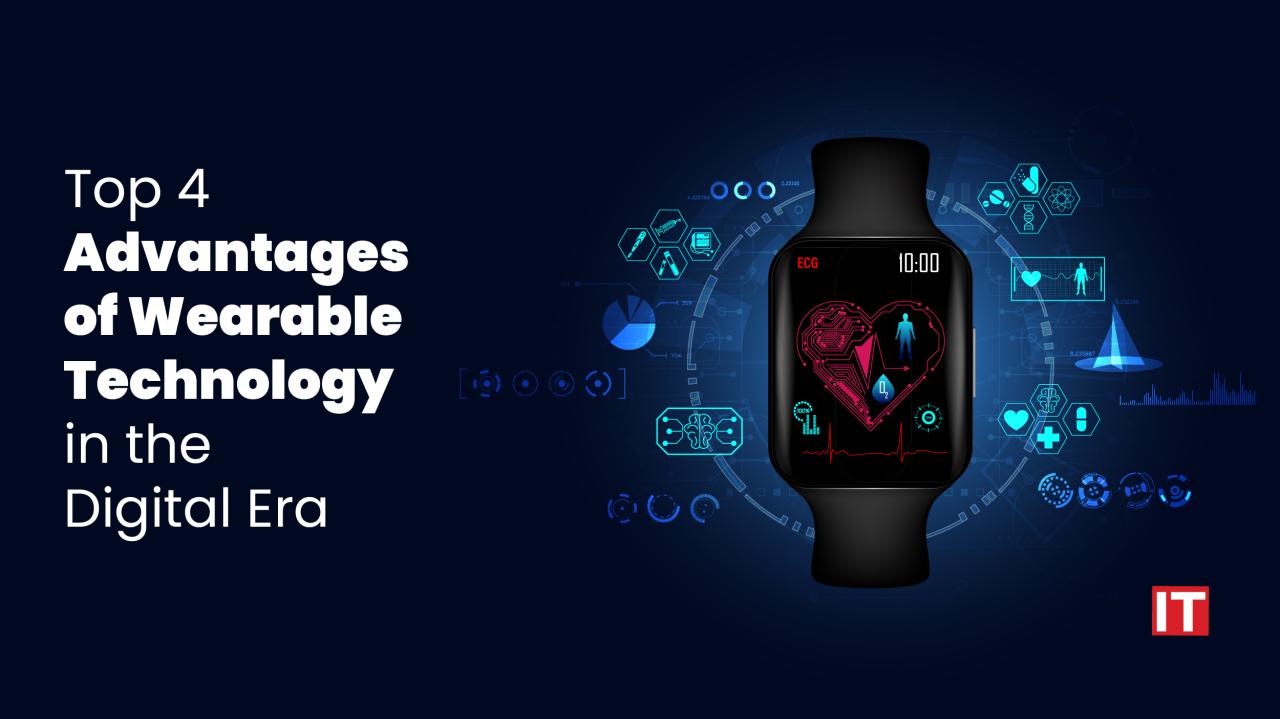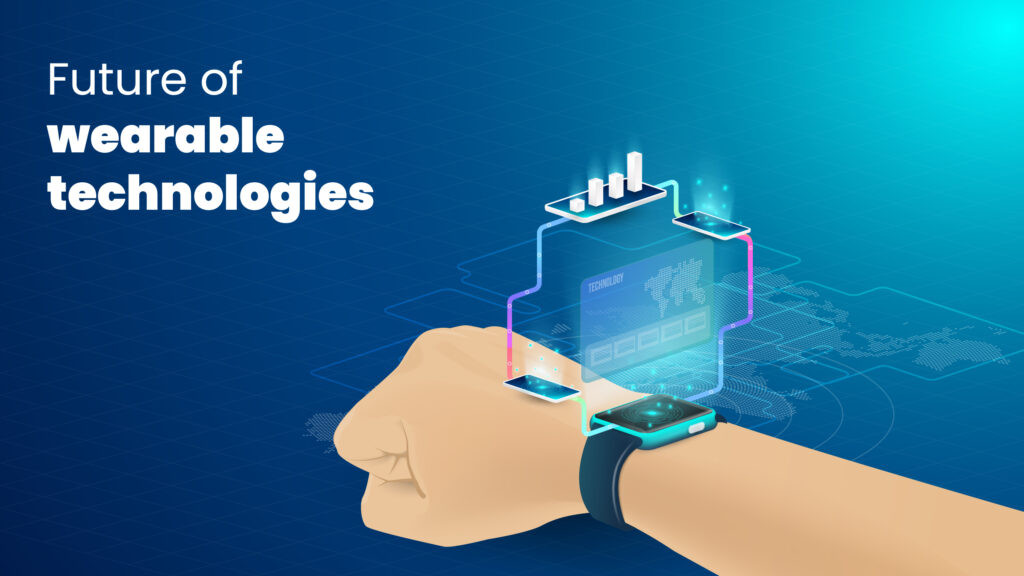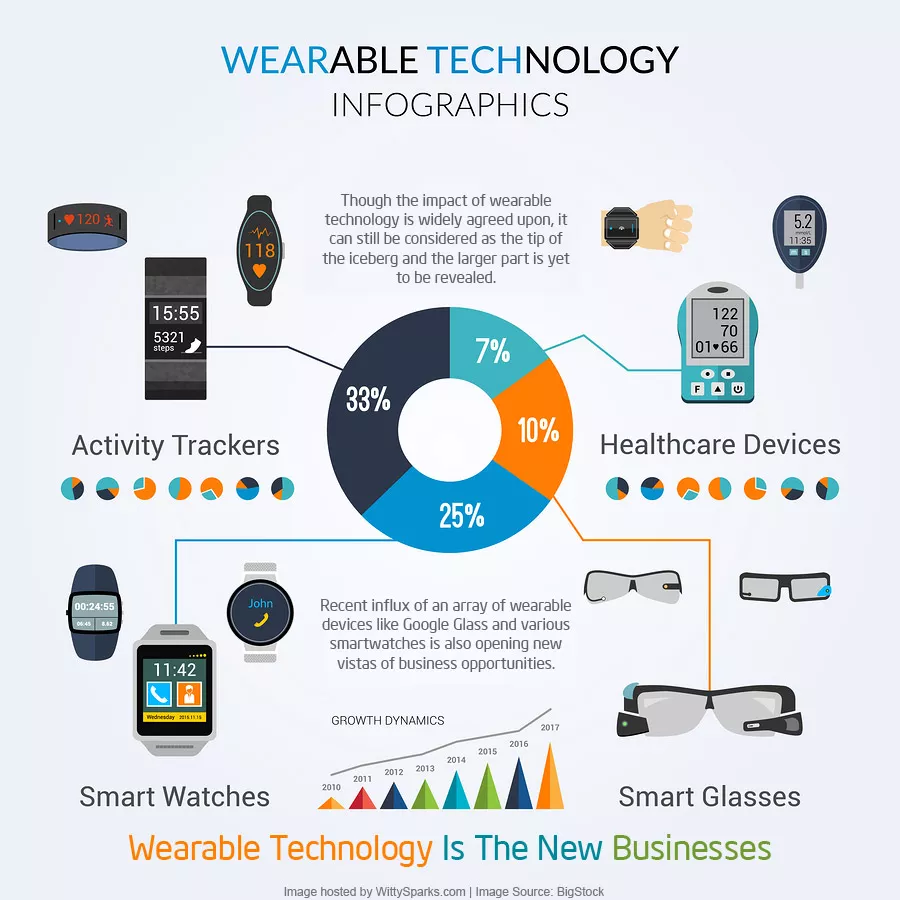Exploring Wearable Technology and its Impact on Modern Digital Life

Wearable technology and its role in modern digilife sets the stage for this enthralling narrative, offering readers a glimpse into a story that is rich in detail and brimming with originality from the outset. As we delve into the world of wearable tech, we uncover a realm where convenience, connectivity, and innovation intertwine to shape our digital existence.
From smartwatches to fitness trackers, the landscape of wearable technology is vast and ever-evolving, presenting a myriad of possibilities for enhancing our daily interactions with digital devices.
Importance of Wearable Technology
Wearable technology plays a crucial role in modern digital life, offering users convenient access to information and services right at their fingertips. These innovative devices have revolutionized the way we interact with digital technology, seamlessly integrating into our daily routines.
Impact on Daily Life
Wearable technology has become increasingly popular due to its ability to enhance productivity, health monitoring, and communication. Devices like smartwatches, fitness trackers, and augmented reality glasses have transformed the way we manage our schedules, track our fitness goals, and stay connected with others.
- Smartwatches, such as the Apple Watch and Samsung Galaxy Watch, allow users to receive notifications, make calls, track fitness metrics, and even make payments all from their wrist. This convenience has made staying organized and connected easier than ever before.
- Fitness trackers like Fitbit and Garmin devices have revolutionized the way people monitor their health and fitness goals. These devices track steps, calories burned, heart rate, and even sleep patterns, providing valuable insights that help users make healthier lifestyle choices.
- Augmented reality glasses, such as Google Glass, have opened up new possibilities in fields like healthcare, manufacturing, and education. These devices overlay digital information onto the real world, offering hands-free access to data and enhancing productivity in various industries.
Types of Wearable Technology

Wearable technology comes in various forms and serves different purposes in our daily lives. Let's explore the different types of wearable technology available in the market and their unique functionalities.
Smartwatches
Smartwatches are wrist-worn devices that offer features beyond timekeeping. They typically connect to your smartphone and allow you to receive notifications, track fitness metrics, make calls, and more. Some popular smartwatch brands include Apple Watch, Samsung Galaxy Watch, and Fitbit Versa.
Fitness Trackers
Fitness trackers are wearable devices designed to monitor your physical activity and health metrics. They can track steps taken, calories burned, heart rate, sleep patterns, and even provide workout guidance. Examples of fitness trackers include Fitbit Charge, Garmin Vivosmart, and Xiaomi Mi Band.
Smart Clothing
Smart clothing integrates technology into the fabric, allowing for various functionalities such as tracking biometric data, regulating body temperature, and even charging electronic devices. Brands like Under Armour, Hexoskin, and Samsung have introduced smart clothing lines that cater to fitness enthusiasts and tech-savvy individuals.
Augmented Reality (AR) Glasses
AR glasses overlay digital information onto the real world, enhancing our perception and interaction with the environment. Devices like Google Glass, Microsoft HoloLens, and Magic Leap One enable users to access information hands-free, play games, or receive navigation guidance through the glasses.
Health Monitoring Devices
Health monitoring devices encompass a wide range of wearable technology that focuses on tracking and managing health conditions. These devices can monitor blood pressure, glucose levels, ECG, and other vital signs, providing valuable data to users and healthcare professionals for better health management.
Benefits of Wearable Technology

Wearable technology offers numerous advantages in daily activities, enhancing productivity, convenience, and health monitoring.
Enhanced Productivity
- Wearable devices provide quick access to notifications, allowing users to stay updated without constantly checking their phones.
- Integration with calendars and task managers helps individuals manage their schedule efficiently.
- Hands-free operation enables multitasking, increasing work efficiency.
Convenience in Modern Life
- Wearable technology enables contactless payments, eliminating the need to carry cash or credit cards.
- GPS tracking on smartwatches and fitness bands provides real-time navigation, making travel more convenient.
- Voice commands and smart assistants on wearables simplify daily tasks like setting reminders or sending messages.
Health Monitoring and Fitness Tracking
- Wearable devices can track heart rate, sleep patterns, and calorie burn, promoting a healthier lifestyle.
- Integration with fitness apps allows users to set goals, monitor progress, and receive personalized recommendations.
- Emergency features like fall detection and SOS alerts enhance safety and peace of mind for users.
Challenges and Limitations
Wearable technology has undoubtedly brought numerous benefits to our modern digital lives, but it also faces several challenges and limitations that need to be addressed.
Design Challenges
One of the major challenges faced by wearable technology is in terms of design. Many devices still struggle to find the perfect balance between functionality and aesthetics. Users often find wearable devices bulky, unattractive, or uncomfortable to wear for extended periods.
Usability and Adoption Issues
Another challenge is related to usability and adoption. Some wearable devices have complex interfaces that make them difficult to use for the average consumer. Additionally, there is a lack of standardized platforms for wearable technology, leading to compatibility issues with different devices and operating systems.
Limitations of Current Devices
Current wearable technology devices also have limitations in terms of battery life, processing power, and storage capacity. This can restrict the functionality and performance of the devices, making them less efficient for certain tasks or applications.
Privacy and Security Concerns
As wearable devices collect and store personal data, there are growing concerns about privacy and security. Users are worried about the potential misuse or unauthorized access to their sensitive information, raising questions about data protection and cybersecurity measures in place for wearable technology.
Future Trends in Wearable Technology

As technology continues to advance at a rapid pace, the future of wearable technology looks promising. Wearable devices are expected to play an even more significant role in shaping our digital lifestyles, offering innovative solutions to everyday challenges.
Integration of Artificial Intelligence
Artificial Intelligence (AI) is set to revolutionize the wearable tech industry by enabling devices to learn and adapt to user behavior. This integration will enhance the overall user experience and provide personalized recommendations based on individual preferences.
Health Monitoring and Wellness
With the growing focus on health and wellness, future wearable devices are likely to incorporate advanced sensors for real-time health monitoring. These devices may offer more accurate data on vital signs, sleep patterns, and physical activity, empowering users to take control of their well-being.
Augmented Reality (AR) and Virtual Reality (VR)
The integration of AR and VR technologies into wearable devices is expected to redefine how we interact with the digital world. From immersive gaming experiences to enhanced communication tools, AR and VR capabilities will unlock new possibilities for users.
Flexible and Wearable Electronics
Advancements in flexible electronics will lead to the development of more comfortable and discreet wearable devices. From smart clothing to flexible displays, these innovations will offer users greater convenience and flexibility in integrating technology into their daily lives.
Closing Notes
In conclusion, wearable technology emerges as a transformative force in modern digilife, bridging the gap between humans and technology in ways we never imagined. As we continue to embrace the advancements in wearable tech, we are poised to witness a future where the boundaries between the physical and digital realms blur, opening up new avenues for exploration and growth.
Questions and Answers
How does wearable technology impact daily life?
Wearable technology enhances daily life by providing seamless connectivity, personalized data tracking, and convenient access to information on the go.
What are some popular examples of wearable technology devices?
Popular wearable technology devices include smartwatches like Apple Watch, fitness trackers like Fitbit, smart clothing with embedded sensors, and augmented reality glasses.
What challenges do wearable technology face currently?
Challenges include design limitations, usability issues, and concerns regarding data privacy and security when using wearable devices.
What future trends can we expect in wearable technology?
The future of wearable technology holds promises of more advanced health monitoring capabilities, integration with AI and IoT, and the potential for wearable devices to become even more seamlessly integrated into our daily lives.

